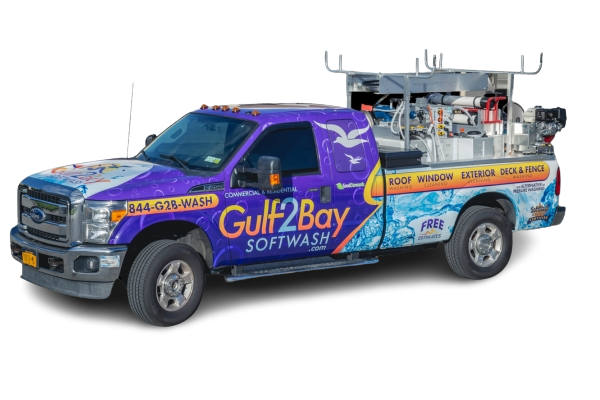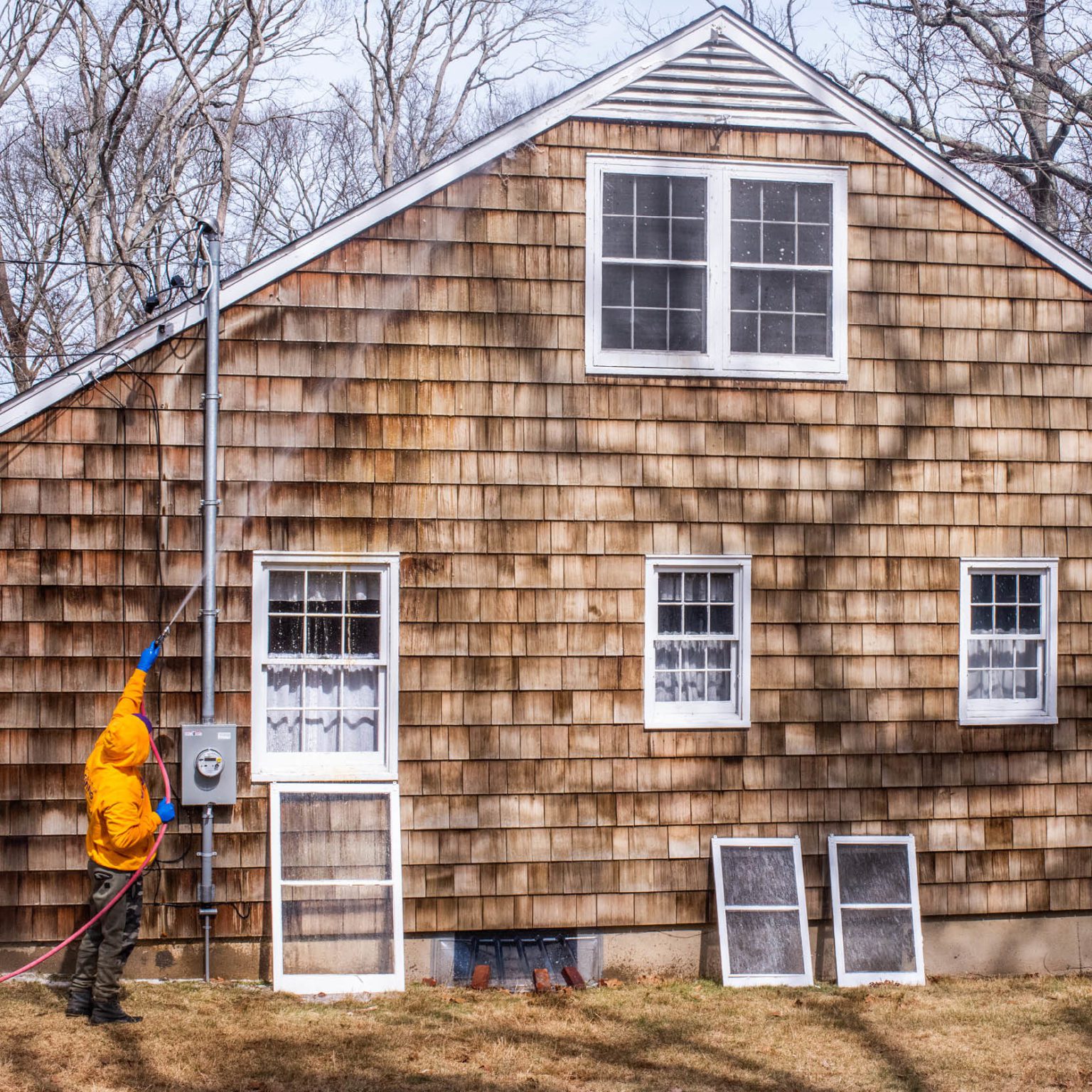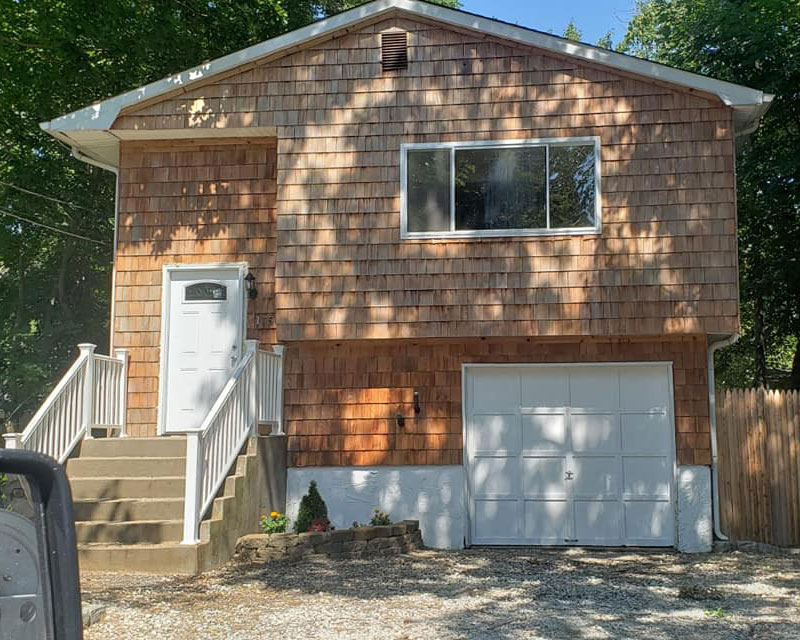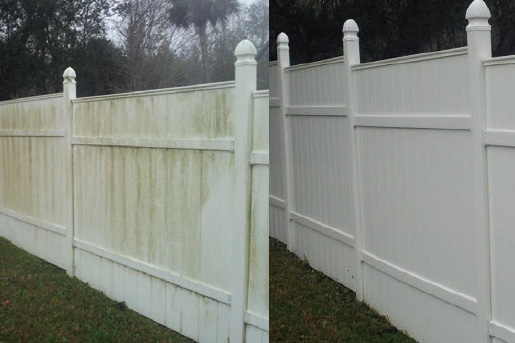
Restore the Natural Beauty of Your Cedar
Cedar is a durable building material that resists decay and can last for decades when properly maintained.
The warm color and classic look of cedarwood are the main reasons property owners choose to have it installed on their home, deck, or fence. When cedar is first installed it looks gorgeous, but over time the wood can lose its vibrancy as dirt, buildup, and mold begin to stain its surface. Due to its delicate nature, soft washing is the only safe way to clean the material without the risk of damaging the wood.
Before we can restore your cedar, we need to assess the root cause of why it’s dirty to begin with. One of the biggest culprits of dingy-looking cedar is mold and mildew. These undesirable substances tend to grow in areas that are heavily shaded. Mold and mildew love moisture, so if your building or deck doesn’t receive an adequate amount of sunlight after a heavy downpour, the chance of bacteria growth on your cedar is high. These organisms feed off airborne contaminants, extractives, oils in the wood, and some finishes. If left untreated, to the point where the organic matter is retaining moisture, it causes the cedar to rot and leads to costly replacements.
The first step in getting your cedar siding to look new again is to kill the harmful bacteria living on and below the surface. The most effective method for removing mildew, mold, dirt, soot, and other pollutants is with a special blend of sodium hypochlorite (the active ingredient in household bleach), sodium metasilicate (non-ammoniated detergent/wetting agent), and calcium hypochlorite (strong oxidizing agent). When appropriately combined and applied to the surface, these ingredients will eliminate the grime from your cedar without breaking down the integrity of the wood.
Often the build-up of mildew and dark stains are caused by inclement weather or particularly shady areas of the property that provide little sunlight to the fence. This can make your normally white vinyl fence appear green and moldy, or your wooden pickets look unappealing with dark stains. Fortunately, this discoloration can often be remedied with a professional soft wash solution.

Cleaning cedar properly requires the tools and experience of a professional soft washing company. Using the right equipment and approach, Gulf2Bay SoftWash can ensure your home is left looking clean, with your cedar siding or deck restored to a uniform, beautiful color.



What is Cedar Bleed?
Another common problem homeowners have is tannin staining and extractive bleeding. This occurs when the natural tannins in the wood are pulled to the surface and deposited on the exterior face of the cedar. The tannins are often observed as a reddish-brown discoloration. Even worse, when tannins mix with iron and metals (such as nails), a chemical reaction occurs that causes the unsightly black stains to occur.
Moisture is the primary cause of cedar bleed, but it can be exacerbated by insufficient caulking or flashing, leaks, and other situations that allow the moisture to get into or behind the wood. Another contributing factor is if the cedar was not properly primed upon installation.
To treat cedar bleed, we apply an oxalic acid-based solution. This will neutralize the iron stains and remove extractive stains, brightening the surface of the wood.
Cedar Restoration Process
A full cedar restoration package goes above and beyond a standard soft wash. Our trained technicians will assess the cedar to identify if the wood has been treated before in the past, whether it’s been sealed, stained, or painted. This will determine what actions need to be performed and the type of finish best suited for the material.


Step 1: Inspect & Clean
Gulf2Bay SoftWash will conduct an inspection to determine the condition of the cedar. For older wood, our specialists need to make sure there is no occurrence of rot or decay. Once the assessment is complete, our first step is to perform a thorough soft wash to kill the mold, mildew and other harmful pollutants growing on and below the surface.
Step 2: Prep & Prime
Next, we pretreat the surface with a proprietary cedar conditioner to remove cedar bleed and those blue-black stains that occur when the zinc in galvanized fasteners weathers away. The surface may need to be sanded or scaped down to remove loose and peeling paint and chalk deposits. If needed, we apply a stain-blocking primer to give the wood an extra layer of protection and allow the finish to properly adhere. Priming cedar helps the wood’s natural properties stay put, reduces the discoloration from tannins, and gives it a significantly longer service life before applying a coat of paint or solid stain. The surface then has to be left to thoroughly dry.
Step 3: Sealing & Staining
Once the surface is prepped and dry, our team can begin the finishing process. There are many different colors and shades available, and what you choose is largely based on preference. Most people are interested in the clear or transparent stain option that gives the wood a more natural appearance. However, we also provide solid and semi-solid finishes that can transform the appearance of your cedar. The products we employ are only commercial-grade and we strive to maintain the appearance of your home for as long as possible.

For Siding & Trim: WoodScapes® by Sherwin-Williams
For Decks, Porches, & Outdoor Furniture: SuperDeck® by Sherwin-Williams
To learn more about these products or for a full list of color options, visit sherwin-williams.com.













